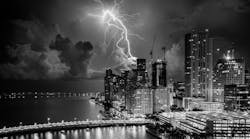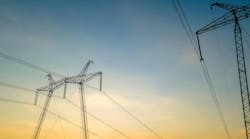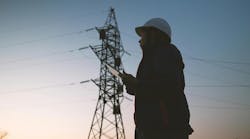Electric utilities and cooperatives have a long history of working with towns and cities in their service territories to improve electric service reliability. Historically, this involved projects such as adding distribution circuits or replacing transformers in a fault-prone areas.
More recently, severe weather events necessitated more significant efforts like implementing or adding to extensive storm-hardening measures in numerous cities around the country. A recent study by the American Council for an Energy-Efficient Economy (ACEEE) suggested that cities with energy efficiency and renewable energy programs may be more resilient than those without such programs (https://www.aceee.org/research-report/u2002). Are host utilities and co-ops the partners of choice for advanced, community sponsored resiliency projects or has that horse left the barn?
A teaser related to the ACEEE study citied findings that solar plus storage could be expected to supply emergency power for a longer duration than diesel generators due to fuel availability. That assessment is an interesting topic for another day. More to the original point, are host utilities installing the community solar or auxiliary solar and battery backup on government buildings to improve community resiliency during emergencies or is it a third party?
ACEEE argues that practically every green initiative one can think of helps with community resiliency. For example, the above referenced study mentions electric vehicles, building efficiency and electrification. Electric utilities and cooperatives have championed energy conservation and energy efficiency programs for decades. They’ve also carried the water for many years regarding EVs and EV infrastructure. Then, doesn’t it go without saying that the utilities and cooperatives that initiated, sponsored and often subsidized conservation, efficiency and electrification programs (including EVs) for so long would be the partner of choice for community related resiliency programs involving these areas? Sadly, the short answer is not necessarily.
The challenges facing utilities include the Internet of Things as well as the falling cost of distributed energy resources and advanced digital solutions for demand response and energy conservation. Further, more than any of these individually significant trends is the reality that regulators and market operators are gradually opening wholesale markets to demand response, storage and now aggregations of distributed energy resources (DERs). The latest example may be approval by the Federal Energy Regulatory Commission (FERC) of revisions to the New York Independent System Operator’s (NYISO) tariffs that will allow aggregations of distributed energy resources (DERs) to participate in NYISO-administered wholesale markets.
Technological advancements and regulatory changes are creating new opportunities to serve customers and simultaneously improve system reliability, resiliency, energy security and fuel diversity. Aggregation of resources also increases the potential for lowering consumer prices, improving market efficiency and allowing consumers to take greater control of their electricity use and costs. Electric utilities and co-ops are uniquely qualified to take the lead on these types of projects and programs, but will they if there is some loss of load involved? Moreover, can they serve in the role of owning or operating distributed resources from a regulatory standpoint? Finally, is it simply too late for host utilities to be the partner of choice because qualified and more aggressive third parties have stepped into the niche?
Hold up a second, are any utility affiliated readers getting burned up over this discussion? As alluded to above, haven’t electric power companies been spending literally millions of dollars over the last decade to vastly improve their systems’ reliability and resiliency? Yes, they have and customers across the country have acknowledged vast improvements in recoveries following major storm events as important evidence of the success of the system improvements. Yet, cities, towns and entities like fire, police and hospitals have constituencies too and they are or will be looking for assistance with achieving that next level of resiliency for their facilities and customers. Will the partner for that next endeavor be the local long-time electric service provider or a new entrepreneur player? Time will tell.


